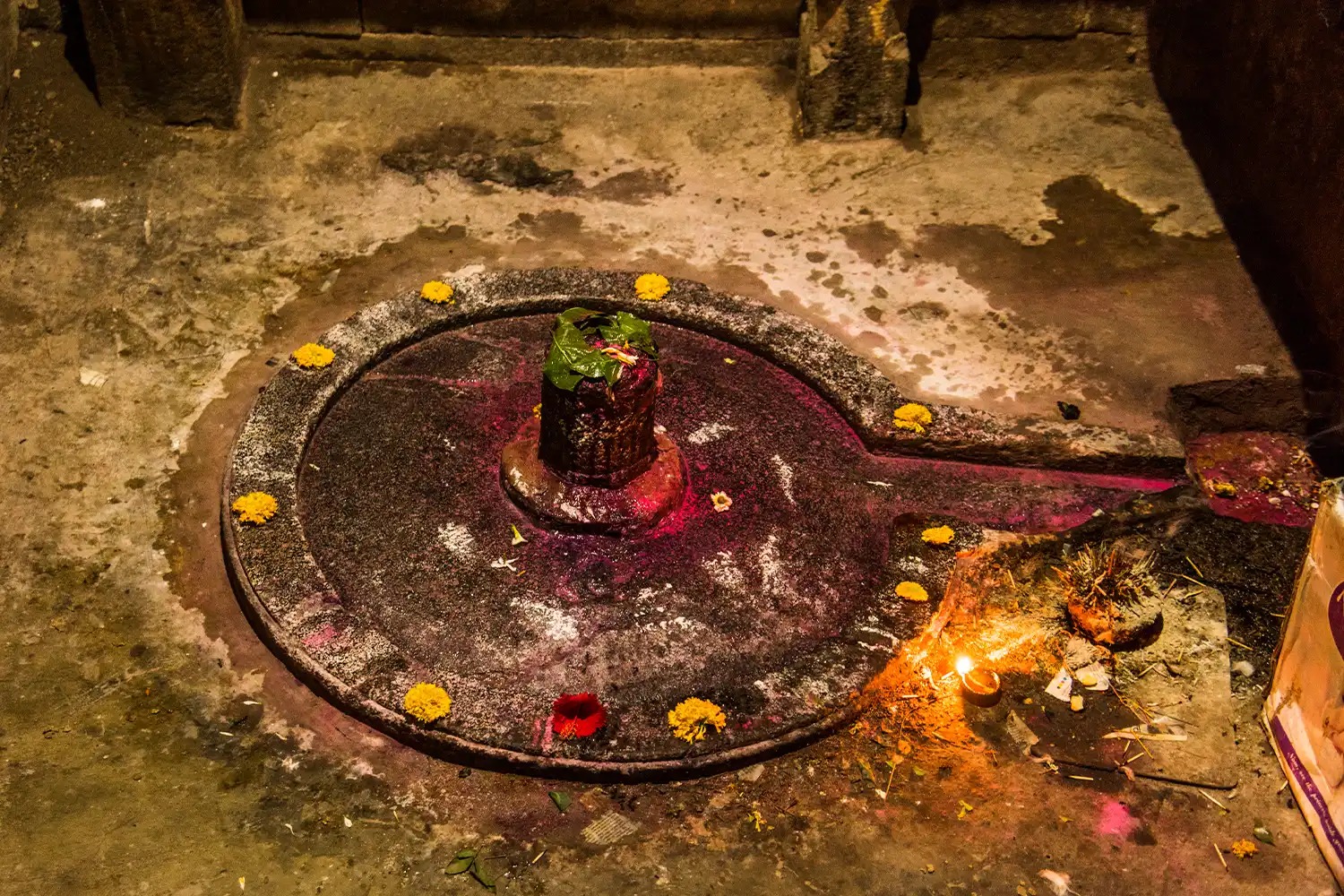The twelve Jyotirlingas are highly revered pilgrimage spots for Hindus everywhere. Located in different parts of India, each of these abodes is home to the deity energy of Lord Shiva and holds a paramount religious and cultural significance. Over a million people visit these hallowed places as pilgrims seeking blessings and salvation every year.
In this article, we have tried to describe the importance of the Jyotirlingas, their locations, how to reach them, and the best times to visit these divine places.
What Are Jyotirlingas?
The term Jyotirlinga is derived from two Sanskrit words: Jyoti meaning light or radiance and Linga, meaning symbol or representation of Lord Shiva. A Jyotirlinga therefore refers to a radiant or self-manifested symbol of Lord Shiva. According to Hindu mythology, it is believed that these shrines were formed by the infinite light (or energy) of Lord Shiva which appeared on earth to bless his devotees.
The origin of Jyotirlingas goes into the ancient roots of mythology told in Shiva Purana-the mythological narration of Lord Vishnu and Brahma on his quest for seeking the starting as well as finishing point of his infinite form as told to these two gods of the Almighty god Shiva that he takes infinite forms and nothing can even match his giant pillars of lights: Jyotirlinga. In his infinite mercy, Shiva let both the gods behold this divine sight. The resplendent pillar which none could grasp was the definition of Jyotirlingas.
Significance of Jyotirlingas
The Jyotirlingas are not only mere temples but are believed to be the direct manifestations of the divine energy of Lord Shiva on Earth. In Hinduism, the importance of visiting these shrines is immense because they are considered places where devotees can connect with Shiva in his most powerful and primordial form.
It so happens that for each of these twelve Jyotirlingas, there’s a legend attributed to it alone, and therefore every shrine gives energy to attain the wish; it removes obstruction and provides divine awakening. Cleansing the soul, purifying the mind by visiting the pilgrimage sites, henceforth leading people to the great realization of Truth and Liberation in Moksha. The sacred journey is interpreted as a travel of devotion with penance that fetches spiritual blessings.
The 12 Jyotirlingas and Their Locations
1. Somnath Jyotirlinga (Gujarat)
The Somnath temple is the first of the 12 Jyotirlingas, located in Prabhas Patan, near Veraval in Gujarat. It is amazingly renowned for its magnificent architecture as well as historical significance. Somnath is said to be the first Jyotirlinga on the Indian subcontinent.
2. Mallikarjuna Jyotirlinga (Andhra Pradesh)
Located on the Shri Mallikarjuna Swamy Temple on the Srikantha Hill in the town of Srisailam, this temple is dedicated to Mallikarjuna (a form of Lord Shiva). It is one of the important pilgrimage sites in Southern India.
3. Mahakaleshwar Jyotirlinga (Madhya Pradesh)
Mahakaleshwar is found in Ujjain, Madhya Pradesh and this is an uncommon place where Shiva is considered as one who is offered prayer in his Bhairav (incarnation of anger). The Shivalingam has its location below the ground level.
4. Omkareshwar Jyotirlinga, Madhya Pradesh
Located on an island in the Narmada River at Khandwa, Omkareshwar is formed like the Hindu symbol Om. It is said that Lord Shiva manifested here in the form of Om to bless his devotees.
5. Kedarnath Jyotirlinga (Uttarakhand)
Kedarnath is one of the difficult ones to reach even located in the High Himalayas, which requires one to walk a long and treacherous path. Dedicated to Lord Shiva in his form of Kedarnath, it is said to symbolize spiritual knowledge and wisdom.
6. Bhimashankar Jyotirlinga (Maharashtra)
Bhimashankar temple situated in Sahyadri hills near Pune is one of the most important places of pilgrimage in Maharashtra. It is Lord Shiva temple, but the place surrounding it has more biodiversity, so it is much preferred for nature lovers.
7. Kashi Vishwanath Jyotirlinga, (Uttar Pradesh)
One of the oldest cities around the globe, Varanasi has the Kashi Vishwanath Temple, which is dedicated to Lord Shiva in his Vishwanath form (Lord of the Universe). It is considered one of the most holy temples in Hinduism and draws millions of pilgrims annually.
8. Trimbakeshwar Jyotirlinga (Maharashtra)
Trimbakeshwar, located near Nashik, is believed to be the source of the Godavari River. The Trimbakeshwar Temple is dedicated to Lord Shiva, and its Shivalingam is unique as it has three faces representing the three forms of Lord Shiva: Brahma, Vishnu, and Shiva.
9. Vaidyanath Jyotirlinga (Jharkhand/Bihar)
The Vaidyanath Temple is located in both Vaidyanath (Jharkhand) and Vaijnath (Bihar). It is said that the temple has healing powers, and it is also linked to the myth of Ravana offering Lord Shiva ten heads in sacrifice.
10. Nageshwar Jyotirlinga (Gujarat)
Nageshwar Jyotirlinga is one of the most prominent temples of Lord Shiva, located in Dwarka, Gujarat. According to belief, the Nageshwar temple was constructed by Lord Krishna.
11. Ramanathaswamy Jyotirlinga (Tamil Nadu)
Ramanathaswamy Temple is an important pilgrimage center located in Rameswaram, Tamil Nadu. The temple is famous for its 22 wells, and each well is believed to possess medicinal properties.
12. Dwaraka (Lord Dwarakanath)
The last of the Jyotirlingas is located in the coastal city of Dwarka in Gujarat, which is said to be the abode of Lord Krishna. The Dwaraka temple is a place of faith and is one of the four Char Dham pilgrimage destinations.
How to Reach the Jyotirlingas?
Reaching the 12 Jyotirlingas requires a combination of air, train, and road travel. The major cities closest to these temples are well connected by Indian Railways, airways, and buses. Here’s how to reach some of the prominent Jyotirlingas:
- Somnath: The nearest airport is in Diu (about 85 km). Somnath is also accessible by train and bus from major cities in Gujarat.
- Kedarnath: The place can only be accessed on foot, but with a helicopter ride to nearby locations or through trekking from Gaurikund, which is some 15 km from the temple.
- Kashi Vishwanath: Its nearest city is Varanasi, which is connected by railway and air. The temple lies in the city, so easily accessible.
- Bhimashankar: The nearest big city, Pune, is either by railway or road. The temple is at about 50 km from Pune.
Which Jyotirlinga to visit and when
The best season to visit depends upon the destination of the particular Jyotirlinga one plans to visit. Most Jyotirlingas are most enjoyable during October and March because it is then cooler. Other special considerations:
- Kedarnath: The Himalayan weather here is extreme so it is practically accessible only in May to November.
- Somnath, Dwarka, and Kashi Vishwanath: These temples can be done at any time of the year, but the best time is winter (October to March) since the climate is amicable.
- Mahakaleshwar and Omkareshwar: The most favourable time to visit these places is during Maha Shivaratri, an annual ceremony meant for Lord Shiva.
The 12 Jyotirlingas are not only sacred shrines but also entrances to deeper spiritual experiences. Visiting these temples provides an opportunity to connect with the divine and experience the rich cultural and religious history of India. Whether it is the challenging trek to Kedarnath, the healing waters of Trimbakeshwar, or the spiritual energy of Kashi Vishwanath, each Jyotirlinga offers something unique to its devotees. So, if you are looking to embark on a spiritual journey, the Jyotirlingas await to bless you with divine energy, peace, and a closer connection to Lord Shiva.







